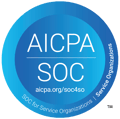I had the pleasure of attending the Annual ALTSLA 2022 Conference at the end of March hosted at JW Marriott in Los Angeles which brought together leading industry experts covering alternative investments including hedge funds, private equity, real estate, natural resources, and, managed futures.
Led by the CFA Society LA, Chartered Alternative Investment Analyst Association (CAIA), and the California Alternative Investment Association–CalALTS, ALTSLA is the annual meeting place and an educational hotspot for those seeking the very latest in alternative investment news and developments. In its seventh year, the event provided some opportunity for the alternatives industry to reflect on pressing matters that are weighing on allocators and managers alike when trying to build future proof portfolios that can manage through a looming inflationary market and the potential of private markets as part of that solution
Following are just a few takeaways from the event:
The Portfolio for the Future
The opening keynote panel hosted by the CAIA highlighted the key theme for the conference and was accompanied by the release of the organizations trademarked seminal thought leadership piece: The Portfolio for the Future™. The panel, hosted by John L. Bowman, CFA, Executive Vice President, (CAIA) touched on what the organization sees as the five cornerstones that will define portfolios for the coming years that will need to be: 1) More Diversified 2) Less Liquid 3) Rooted in a Fiduciary Mindset 4) Actively Engaged and 5) Dependent on Operational Alpha.
At Vidrio, we have found that operational alpha is reflective of the pressures faced by investment teams operating in an increasingly competitive and complex investment landscape. As part of this operational alpha mindset as noted by Ashby Monk, PhD, Executive Director, Stanford Research Initiative on Long Term Investing in the CAIA’s report, firm culture, governance, and technology are becoming much more predictive of sustained performance than previously thought and should be emerging priorities for any leader.
The panel discussion explored how firms that innovate and exploit new organizational and operational models to save cost, reduce risk, and pioneer new investment ideas will lead the pack, which is something at Vidrio we have seen firsthand. We also see this as a natural progression for the alternatives industry in serving the heightened need for systems to keep track of the actual deals and structures of the deals being done to help investors monitor their every increasingly intricate portfolios.
Inflation: An Allocators Perspective
In the second keynote panel, allocators discussed how they are planning to manage portfolios of tomorrow as inflation seems to be awakening from its 40-year hibernation, and global strategists expect the 60/40 portfolio to return a meager 3-4% in the next 10 years.
At Vidrio we have helped allocators monitor in order to reposition their portfolios in light of this rising inflationary environment. Our takeaway from the survey we conducted late in 2021 was that alternatives such as private credit and private equity could see further increased allocations as a result of this 40-year change. This topic of private markets also was discussed on the panel.
Risk Management Meets Deglobalization and ESG
Risk management also came to the fore as the conference focused on the role deglobalization will play in investors’ portfolios and the importance of being able to track and monitor those risks which could lead to a fragmentation of the world economy.
In conversations with our clients in recent months, we have seen a need for ever increasingly focused data on private market portfolios to help staff manage risk and recognize the importance of being able to look under the hood and get granular data as to how each GP is generating their risk premia.
Our clients have been focusing more frequently (than pre-pandemic) on what they own, as well as depth of information within their holdings, e.g., exposure, liquidity, and leverage. For example, “How is each holding performing? What can I do about poor performance? Can I get out of specific positions or change my allocation?” are common queries we receive from clients.
In addition, ESG, which started off as a risk management tool, is becoming more of an actual investment opportunity, and was a key takeaway of the “ESG Management: Navigating Growing Expectations” panel. Panelists included: Ellen Chen, Investment Officer, The Los Angeles City Employees' Retirement System; Rebecca Brown, USA Director, Tobacco Free Portfolios; Alicia Hanf, Founder & Managing Partner, Dear Mama Ventures and Anna Totdahl, CAIA, Investment Executive, ESG and Sustainability, Oregon State Treasury. The discussion centered on the need for investment teams to be able to sift through the noise and be able to actually screen ESG strategies. The panel also concluded that there were too many funds that are labeled as ESG but don’t have the values that are needed to fulfill that metric.
At Vidrio, we see a gap in education that still needs to be filled around this matter. As a firm we have done extensive work to help clients build systems and solutions on the reporting side to help them make sense of their overall ESG exposures. Though surprisingly, we have found through various surveys and discussions that many are still in the opening phases of building out systems with many still lagging in certain areas.
The Crypto Bandwagon Keeps Rolling
As part of the collection of niche but growing areas of interest for managers and allocators alike, the panel on crypto titled “The Ups and Downs of Cryptocurrency –When is The Right Time to Invest?” focused on the potential for some notable changes in the growing crypto market including a meaningful consolidation of crypto currencies, the advent of global currency, and how the Ukraine/Russia conflict has highlighted the role of crypto currencies and also has also led to accelerating the debate for the need for a global payment system.
As an emerging asset class, at Vidrio, we view crypto and other technological advances as important market developments that need to be thoroughly investigated before we can take a stance on how allocators should manage and potentially allocate to such an investment option.
While crypto assets have grown in market adoption, our August 2021 Vidrio Views survey found hesitancy of a meaningful adoption of this asset class by institutional investors and reflected the minimal adoption we had seen across other investors in the Vidrio infrastructure. While there was a significant amount of interest in crypto, through our research we found that for this asset class to gain meaningful traction with the institutional investing community significant inroads will need to be made as it relates to education and that investors will need to reach a level of comfort beyond where current sentiment resides.
Let's Talk
I would be happy to speak with you about any of the above discussion points, and I encourage you to view the Vidrio Blog and our past Vidrio Views survey results for more insights and ideas from the industry.







